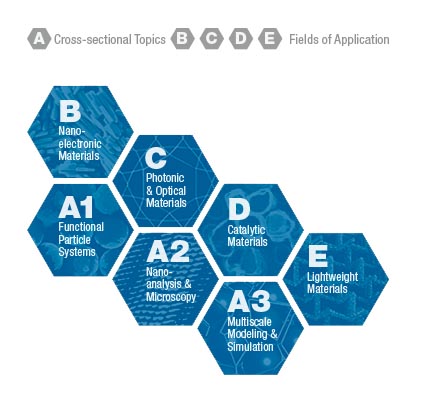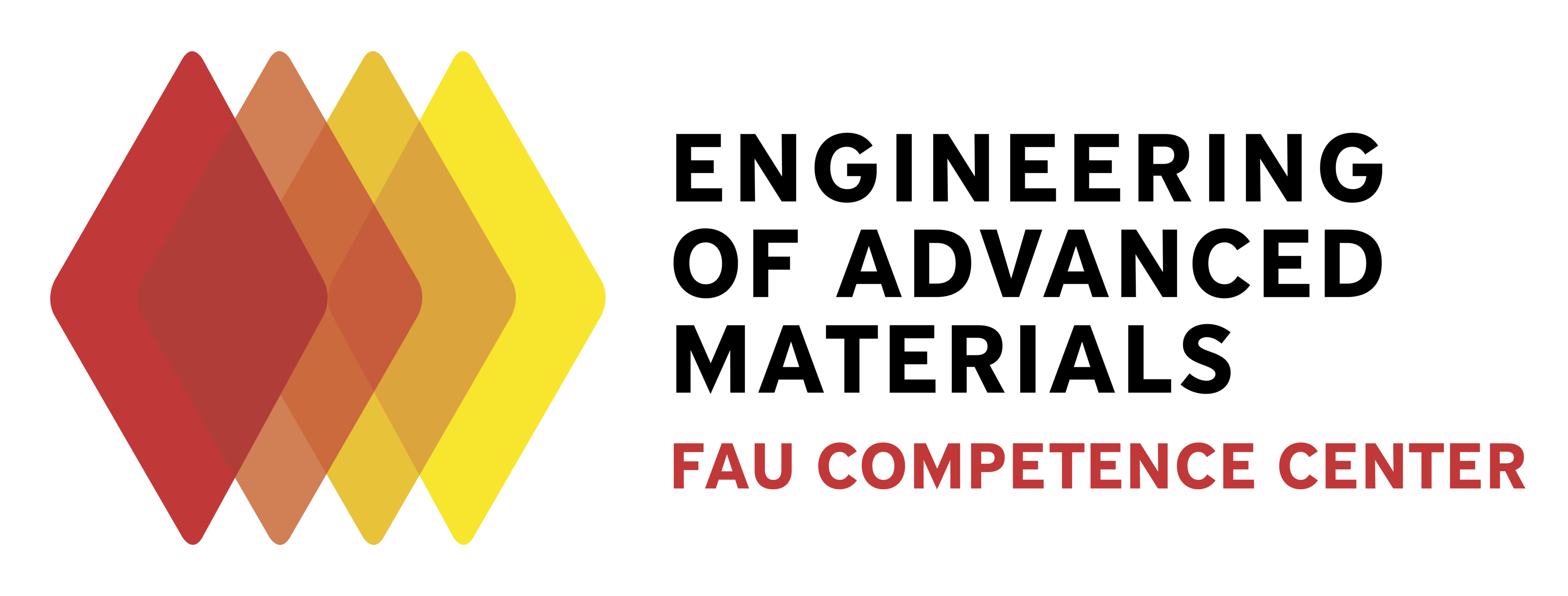Research
Particle technology (A1), analytical tools and methods (A2), and multiscale (both temporal and spatial) modeling and simulation (A3) were Research Areas of central importance to all areas of EAM during the DFG project funding. Their overall goal was to develop common methods for fabricating building blocks (molecules and particles) that were required for formatting structures in the Research Areas B, C, D and E.
These four application-oriented Research Areas were organized in interdisciplinary process chains for the engineering of specific material classes: Nanoelectronic Materials (B), Photonic and Optical Materials (C), Catalytic Materials (D) and Lightweight Materials (E). Demonstrators were developed in these Research Areas in close cooperation with external academic and industrial partners integrated in the EAM.

Track record (1 December 2019)
- 2,518 publications
- 30% in journals with an impact factor > 6 (e.g. 46 publications in Nature group)
- 25% of all publications across EAM research areas
- 34 % of all publications involving 2 or more EAM members
285 doctoral theses completed / 133 ongoing doctoral theses on EAM topics
Active collaboration across 8 disciplines – between eight Departments of the Faculties of Engineering and Sciences: Applied Mathematics, Chemical Engineering, Chemistry, Computer Science, Materials Science and Engineering, Mechanical Engineering, Electrical Engineering, Physics.
Strategic alliances with BayerAG, BASF SE, BMW, Clariant/Süd-Chemie, Greenerity/SolviCore, Lanxess, Merck, P&G
New DFG coordinated programs initiated and supported by EAM members
- 3 Collaborative Research Centers (CRCs)
- 1 Transregio (TR/CRC)
- 2 Research Training Groups (RTGs)
- 2 Research Units (RUs)
EAM researchers received 18 ERC Grants (6 ERC Starting Grants, 3 ERC Consolidator Grants, 9 ERC Advanced Grants)
13 EAM Starting Grants granted to junior group leaders (five of these projects have sucessfully applied for an ERC Grant)
75 national and international patents are held or have been applied for
8 demonstrators developed
